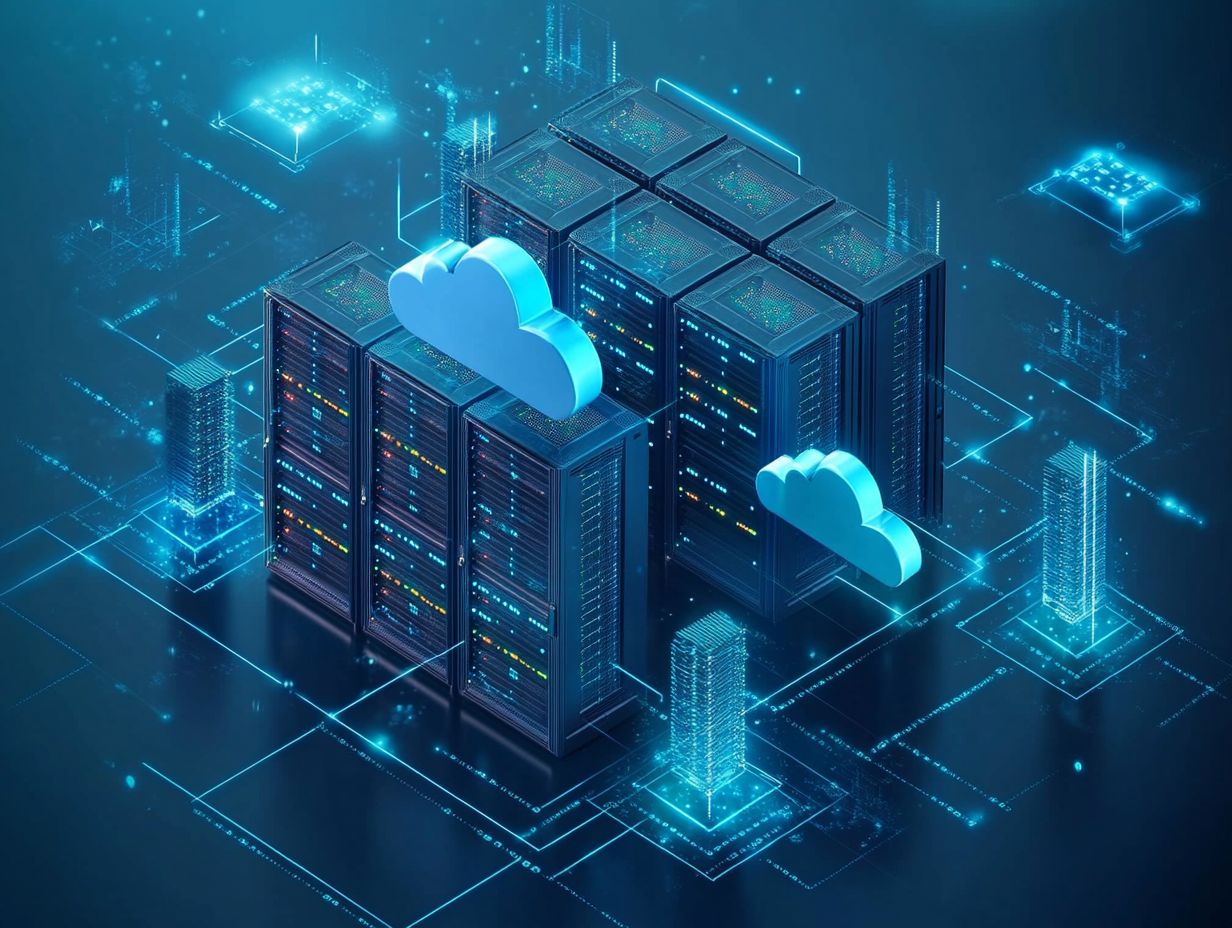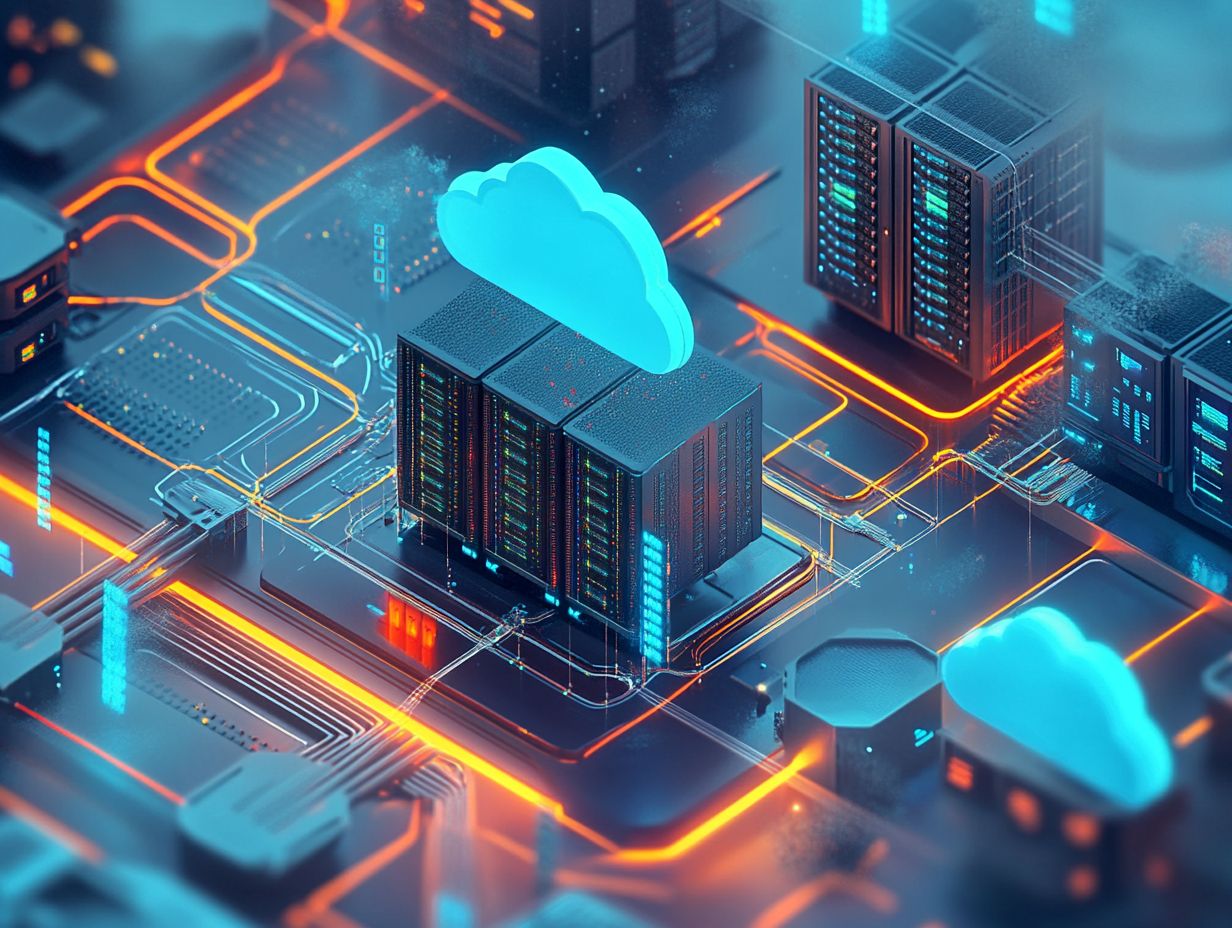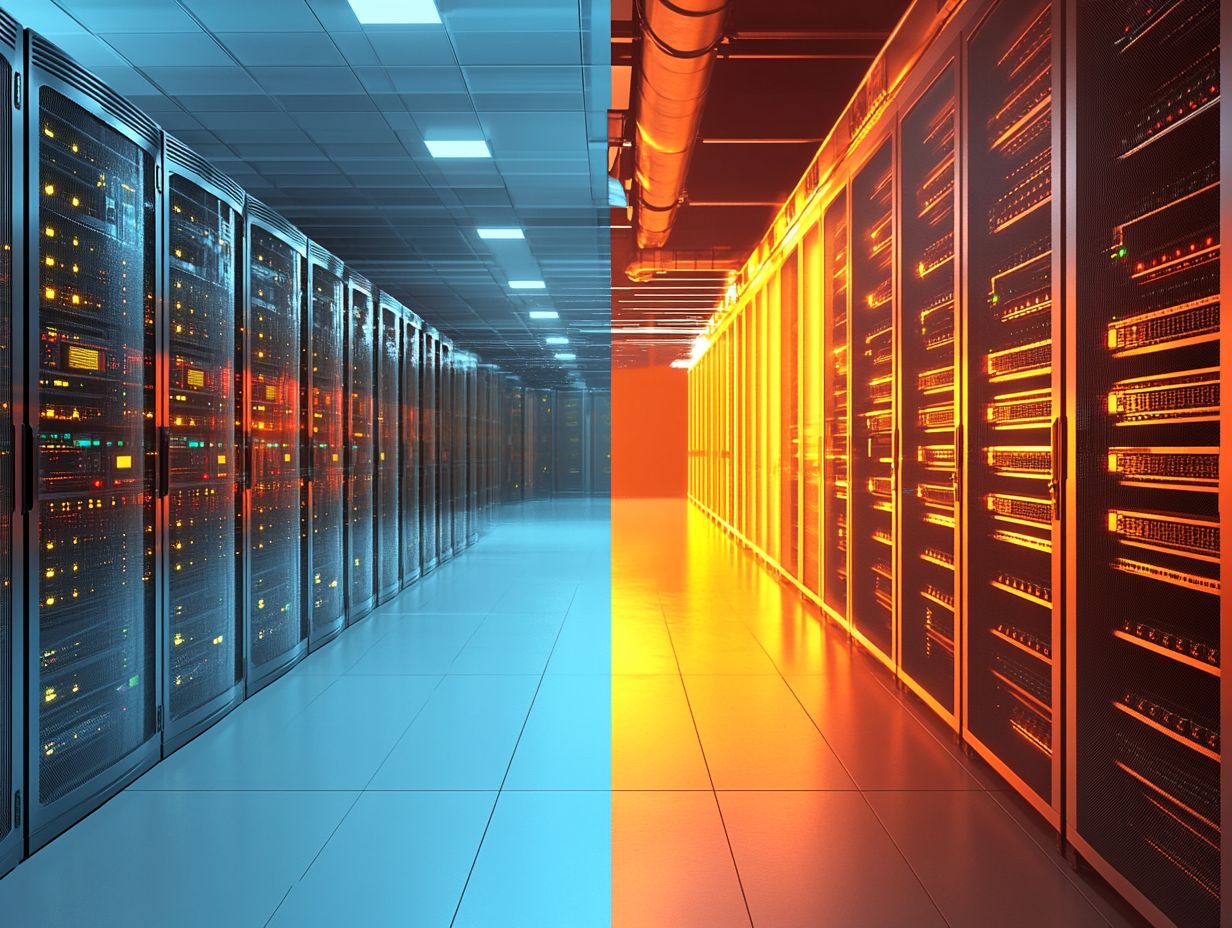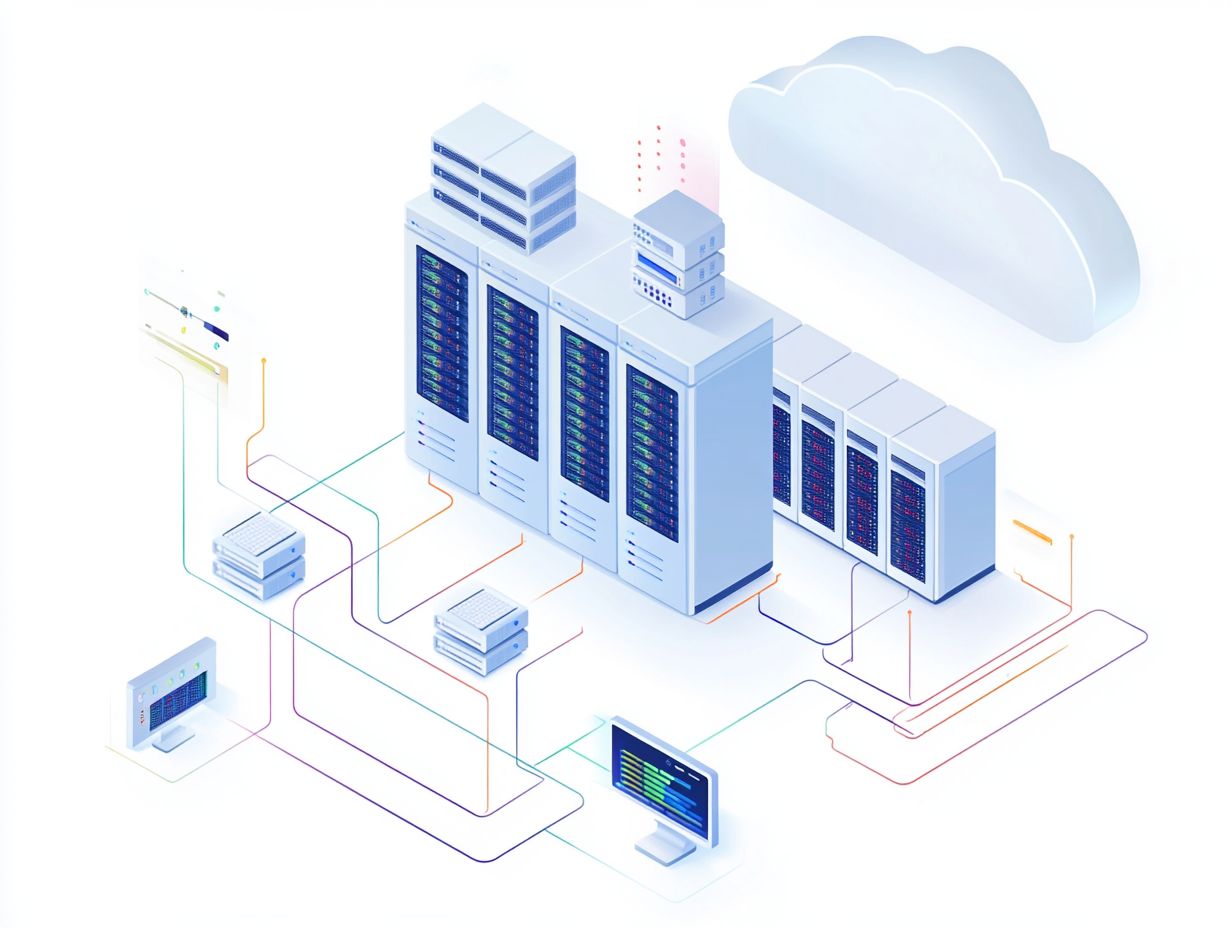IaaS vs. Traditional IT Infrastructure
In today s fast-paced tech landscape, you often find yourself at a crossroads, deciding between Infrastructure as a Service (IaaS) and traditional IT infrastructure.
Each option presents a unique set of advantages and challenges that can profoundly affect your operations, costs, and scalability.
This article will unravel the key differences between IaaS and traditional setups, delve into the benefits of adopting IaaS, and provide you with insightful guidance on when to choose one over the other.
No matter if you re a small startup or an established enterprise, grasping these distinctions empowers you to make informed decisions that align seamlessly with your organizational goals.
Contents
- Key Takeaways:
- Defining IaaS and Traditional IT Infrastructure
- Key Differences Between IaaS and Traditional IT Infrastructure
- Benefits of IaaS
- When to Choose IaaS vs. Traditional IT Infrastructure
- Frequently Asked Questions
- Conclusion
- What is the difference between IaaS and traditional IT infrastructure?
- How does the cost of IaaS compare to traditional IT infrastructure?
- What are the advantages of using IaaS over traditional IT infrastructure?
- What are the potential drawbacks of using IaaS instead of traditional IT infrastructure?
- Is it possible to migrate from traditional IT infrastructure to IaaS?
- How does the management of IaaS differ from traditional IT infrastructure?
Key Takeaways:

IaaS offers a flexible and scalable cost structure, allowing businesses to only pay for the resources they need and easily adjust as their needs change.
With IaaS, businesses can scale up or down their IT infrastructure as needed, without the costly and time-consuming process of building and managing traditional infrastructure.
IaaS takes the burden off businesses for maintenance and management of their IT infrastructure, freeing up valuable resources and allowing them to focus on their core competencies.
Defining IaaS and Traditional IT Infrastructure
Infrastructure as a Service (IaaS) is a new way to manage IT infrastructure. Instead of investing heavily in physical hardware and managing it on-site, you can harness cloud computing solutions provided by cloud vendors.
This strategic shift allows your organization to enhance operational efficiency and allocate resources with greater precision.
Key Differences Between IaaS and Traditional IT Infrastructure
When you compare IaaS to traditional IT infrastructure, several key differences become apparent, especially in scalability, cost-effectiveness, and management responsibilities.
These distinctions profoundly influence how you deploy and manage your IT resources within your organization. Don t miss out on the chance to revolutionize your IT strategy today!
Cost Structure
The cost structure for IaaS is fundamentally different from that of traditional IT infrastructure. Instead of facing hefty capital expenses due to significant hardware investments and ongoing maintenance costs, you can enjoy predictable operational costs associated with subscription-based cloud services.
By embracing IaaS, you can eliminate daunting upfront costs linked to purchasing servers, storage devices, and other essential equipment. Instead, you can opt for pay-as-you-go models that charge you based on actual usage.
Imagine a startup leveraging cloud-based virtual machines without the constant worry of hardware downtime or depreciation costs. The IaaS provider takes care of software updates, which means you don t have to maintain a dedicated IT team for upgrades and repairs.
This exciting flexibility of IaaS lets you focus on growth and innovation!
Scalability and Flexibility
Scalability and flexibility stand out as some of the most compelling advantages of IaaS, enabling you to swiftly adjust your IT resources in response to demand.
You can easily deploy virtual machines and take full advantage of the diverse deployment options offered by cloud providers. This capability revolutionizes how you handle peaks in traffic or workloads.
It enables you to scale up rapidly during high-demand periods, like seasonal sales or product launches, and just as swiftly scale down during quieter times to optimize costs.
For example, a retail company can seamlessly add multiple virtual machines during the holiday rush to accommodate a surge in online orders, avoiding the pitfalls of over-provisioning.
When the off-peak seasons arrive, they can easily reduce their resources, ensuring they only pay for what they actually use.
This dynamic approach allows you to concentrate on growth without the limitations imposed by traditional infrastructure.
Responsibility for Maintenance and Management

In the realm of IT management, Infrastructure as a Service (IaaS) transforms your responsibilities for maintenance, shifting much of the burden from your organization to cloud providers. This shift allows you to focus on strategic initiatives rather than getting bogged down by routine maintenance and compliance requirements.
This transition eases worries about hardware failures and upgrades. It also grants flexibility to scale resources as needed. With IaaS, you can swiftly provision and de-provision resources, adapting effortlessly to fluctuations in demand without the extended lead times that traditional IT infrastructure often entails.
As a result, specialized teams at the cloud provider predominantly manage the technical challenges associated with server management, storage capacity, and network configurations. This enables you to concentrate on optimizing performance, enhancing security, and improving overall business outcomes.
This shift lets you innovate more rapidly and respond to market changes with agility, freeing you from the complexities and limitations of managing physical assets.
Security and Data Protection
Security and data protection are paramount when weighing IaaS against traditional IT infrastructure. While cloud solutions present unique cybersecurity challenges, they also offer advanced data governance tools and compliance capabilities that often surpass traditional methods.
Understanding these nuances is crucial as you seek to harness the cloud’s potential while safeguarding your valuable data. IaaS environments come with robust security features, such as automated monitoring and real-time threat detection, designed to help mitigate risks effectively.
You ll navigate the complexities of shared responsibility models, where both cloud providers and users play distinct roles in ensuring security. This differs from traditional infrastructure, where organizations typically manage all security protocols internally.
Cloud providers enforce strict compliance frameworks aligned with industry standards, fostering a safer environment compared to on-premises setups. However, the ever-evolving landscape of cyber threats demands vigilant adaptation and proactive management from everyone involved.
Benefits of IaaS
IaaS offers a wealth of advantages that can significantly elevate your business operations. You’ll enjoy substantial cost savings, enhanced operational efficiency, and the flexibility to scale resources swiftly in response to shifting demands.
These factors establish IaaS as the preferred choice for contemporary organizations seeking to thrive in a competitive landscape.
Cost Savings and Efficiency
Embracing IaaS presents one of the most compelling opportunities for significant cost savings and enhanced operational efficiency. By adopting this model, you can effectively reduce maintenance expenses and employee costs tied to managing physical IT infrastructure.
Leveraging IaaS allows you to transition seamlessly from expensive on-premises systems to scalable cloud solutions, often resulting in considerable reductions in IT expenditures. For instance, a mid-sized retail company reported a remarkable 30% decrease in operating costs after migrating to an IaaS platform. This shift minimized the need for a large IT staff and reduced hardware maintenance demands.
Not only are you cutting costs, but you’re also experiencing improved efficiency in workflow and project delivery times. This transformation empowers your teams to strategically allocate resources and drive innovation while minimizing unnecessary overhead.
Scalability and Adaptability
IaaS offers extraordinary scalability and adaptability. It allows you to allocate and scale your IT resources on demand, which is essential for responding to market trends and business requirements in real-time.
This flexibility enables you to adjust your computing power and storage effortlessly as your needs change. For instance, an e-commerce platform can increase its server capacity during peak shopping seasons like Black Friday, which is crucial for handling high traffic and ensuring minimal downtime.
A startup, on the other hand, can scale down its resources during quieter periods, effectively reducing costs while still maintaining enough infrastructure to support growth.
By leveraging IaaS, you can navigate shifting landscapes easily, ensuring that you are always prepared to meet customer demands and tackle operational challenges swiftly.
Reduced Maintenance and Management Burden

With IaaS, you can significantly lighten your maintenance and management load. This enables your internal teams to focus on higher-value tasks and innovation instead of routine infrastructure upkeep.
This transition boosts operational efficiency and allows your company to invest in developing new products and services. With infrastructure challenges handled, your teams can unleash their creativity and expertise on strategic initiatives that drive growth.
IaaS provides the scalability needed to align with your business needs, enabling you to adapt quickly to changing market conditions and customer demands without the hassle of managing physical servers. As a result, your organization becomes more agile, fostering a culture of continuous improvement and innovation.
Enhanced Security and Data Protection
IaaS equips you with enhanced security and data protection measures. Cloud providers invest significant resources into cybersecurity solutions and compliance frameworks, providing robust tools to safeguard your data.
This modern approach includes features like encryption, identity management, and multi-factor authentication, often surpassing what traditional IT infrastructure can deliver.
You can leverage these cloud-native capabilities to ensure compliance with industry regulations such as GDPR and HIPAA, guaranteeing that sensitive information is securely stored and managed under stringent safeguards.
By transitioning to IaaS, you can concentrate on your core operations while relying on experienced providers who continuously update their security protocols, maintaining a proactive stance against evolving cyber threats.
When to Choose IaaS vs. Traditional IT Infrastructure
Deciding between IaaS and traditional IT infrastructure requires careful consideration. Think about your business growth objectives, evaluate your resource needs, and assess the potential technical challenges of each option.
Each path has its nuances, so take time to reflect to ensure alignment with your strategic goals.
Factors to Consider
When deciding between IaaS and traditional IT infrastructure, several factors are important, particularly regarding your business growth goals, data ownership, and compliance requirements.
Consider scalability, as IaaS offers flexible resource allocation that can adapt to your changing demands a critical aspect for any company aiming for expansion.
Evaluating cost structures is equally essential; you must weigh up-front investments against ongoing operational expenses to shape your budgeting strategies.
The ability to integrate seamlessly with existing systems enhances efficiency and minimizes disruption during the transition.
Assess the available technical support and maintenance options, as these can significantly influence your long-term operational effectiveness and ensure alignment with your business objectives.
Frequently Asked Questions
Conclusion
In summary, IaaS provides significant advantages over traditional IT infrastructure, including enhanced scalability, reduced maintenance burdens, and improved security. Carefully assess your business needs and consider leveraging IaaS solutions to drive growth and innovation.
Ready to explore IaaS solutions for your business? Take action today and discover how it can transform your operations!
What is the difference between IaaS and traditional IT infrastructure?

IaaS, or Infrastructure as a Service, is a cloud computing model. In this model, a third-party provider offers IT infrastructure resources like servers and storage over the internet.
Traditional IT infrastructure refers to hardware and software installed at the company s location. Organizations use it to manage and store their data and applications.
How does the cost of IaaS compare to traditional IT infrastructure?
IaaS can save your business money! It eliminates the need for organizations to invest in and maintain their own physical hardware.
With IaaS, businesses only pay for the resources they use. This makes it a more flexible option that can grow or shrink easily.
What are the advantages of using IaaS over traditional IT infrastructure?
IaaS offers several advantages over traditional IT infrastructure. These include increased flexibility and cost-effectiveness.
With IaaS, businesses can easily scale their resources as needed. This means they don t have to invest in additional physical hardware.
What are the potential drawbacks of using IaaS instead of traditional IT infrastructure?
One potential drawback of using IaaS is the reliance on internet connectivity. Connection issues can affect application and data performance.
Additionally, businesses must trust their IaaS provider to manage and secure their data. This may raise concerns for some organizations.
Is it possible to migrate from traditional IT infrastructure to IaaS?
Yes, migrating to IaaS is possible! With the right planning, you can make the switch smoothly and boost your efficiency.
Organizations should evaluate their current infrastructure. This helps determine which components can easily move to the cloud and which require more consideration.
How does the management of IaaS differ from traditional IT infrastructure?
With traditional IT infrastructure, businesses must manage all hardware and software. This includes updates and security patches.
With IaaS, the service provider handles those tasks. This allows businesses to focus on other aspects of their operations, but they are still responsible for their data and applications on the cloud.






